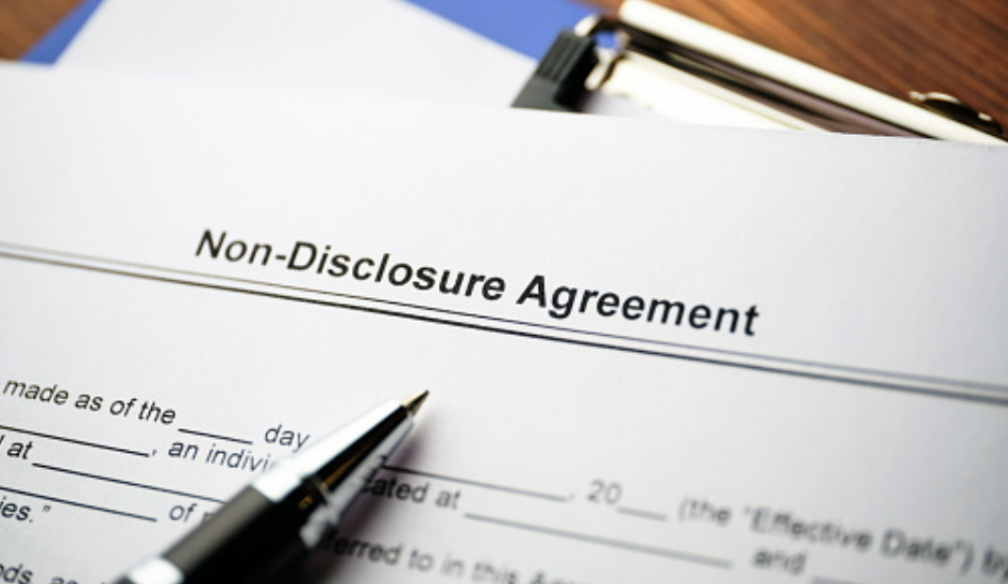A Well-Written Non-Disclosure Agreement Template May Offer a Lot of Security

What is a Non-Disclosure Agreement (NDA)?
A non disclosure agreement template is a helpful tool for businesses and individuals who want to keep confidential information private. By having a signed agreement in place, both parties can rest assured that any information shared will not be used for unauthorized purposes. While no legal document can completely guarantee confidentiality, a well-drafted NDA can provide significant protection.
Why might I need an NDA?
If you are planning to disclose confidential information to another party, you may want to consider having the other party sign a nondisclosure agreement (NDA). An NDA is a legally binding contract that requires the other party to keep information disclosed in confidence and not use it for their own personal gain.
There are many reasons why you might need an NDA. For example, if you are starting a new business, you may want to share your business plan with potential investors. However, you would not want these investors to take your idea and start their own competing business. In this case, an NDA would protect your confidential information.
Another reason why you might need an NDA is if you are disclosing trade secrets or sensitive information to another company during negotiations for a possible merger or joint venture. If these negotiations fall through, you would not want the other company to be able to use your trade secrets to compete against you. Again, an NDA would protect your interests in this situation.
Finally, NDAs can also be used in more personal situations. For example, if you are writing a memoir about your life, you may want your publisher to sign an NDA before reading your manuscript.
When should I use an NDA?
There are many situations in which you might want to have a template non disclosure agreement, or NDA . An NDA is a legally binding contract in which one or more parties agree not to share certain information. The information covered by an NDA could be just about anything, from business secrets to proprietary software code.
If you're thinking about entering into an NDA, you should first consult with an experienced attorney. NDAs are complicated legal documents, and it's important to make sure that you understand all of the terms before signing one. That said, there are some general situations in which NDAs may be appropriate:
- When You're Sharing Confidential Information
If you're planning to share confidential information with another party, you should have that party sign an NDA beforehand. This will ensure that the information remains confidential and cannot be used without your permission.
- When You're Working on a Joint Project
If you're working on a joint project with another party, it may make sense to sign an NDA. This will protect any proprietary information or trade secrets that either party brings to the project.
How do I create an NDA?
An NDA, or Non-Disclosure Agreement, is a contract used to protect confidential information from being shared. To create an NDA, first you will need to identify what information needs to be protected and then find a way to prevent the disclosure of that information. This can be done through physical means, such as locking up documents, or through legal means, such as signing an agreement not to share the information.
Once you have decided how you will protect the confidential information, you will need to create a contract that outlines the terms of the NDA. The contract should include the definition of what is considered confidential information, the obligations of both parties not to disclose that information, and any consequences that may occur if either party breaks the agreement. After the contract is created, both parties must sign it in order to make it legally binding.
What should I include in my NDA?
When you are about to sign a non-disclosure agreement (NDA), it is important to understand what should be included in the agreement in order to protect yourself. Here are four key elements that should be included in every NDA.
- The Purpose of the Agreement
The first thing that should be included in an NDA is the purpose of the agreement. This may seem like a no-brainer, but it is important to be clear about why you are signing the NDA in the first place. What information are you trying to protect? Make sure this is clearly stated in the agreement.
- Who is Bound by the Agreement?
Another important element to include in an NDA is who is bound by the agreement. In other words, who will be held responsible if they break the terms of the NDA? This should include not only the person signing the agreement, but also any company they work for or represent.
- What Happens if There is a Breach?
If someone does break the terms of your NDA, it is important to include what will happen as a result. This may include financial penalties or legal action. Be sure to consult with an attorney before including any specific language here.
How do I enforce my NDA?
If you want to enforce your NDA, you need to be able to prove that the other party breached the agreement. This can be difficult to do if there is no written record of the agreement. The best way to enforce an NDA is to have a lawyer draft a binding contract that both parties sign. This contract should outline the confidential information that cannot be shared, the consequences of breaching the agreement, and how disputes will be resolved. If one party breaches the contract, the other party can take legal action to enforce the agreement and recover damages.

